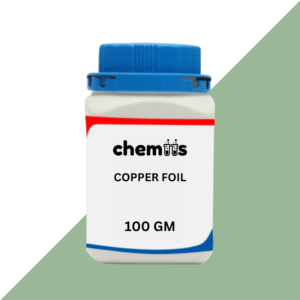Copper Iodide (CuI) is a vital compound that has a broad range of applications in industrial, commercial, and research fields. Known for its distinct white crystalline appearance, this compound is essential in semiconductor technology, chemical synthesis, renewable energy, and more. With its unique properties, including its behavior as a semiconductor, Copper Iodide is used extensively in photovoltaic cells, organic light-emitting diodes (OLEDs), and as a catalyst in numerous organic reactions.
Copper Iodide also finds utility in chemical manufacturing and material science, where it is employed to synthesize a wide variety of compounds. Researchers and industries around the world rely on Copper Iodide’s ability to act as a critical reagent in key chemical processes.
Applications of Copper Iodide (CuI)
1. Semiconductor Devices and Electronics
Copper Iodide (CuI) is a crucial material in the electronics industry due to its semi-conducting properties. It is used in the manufacture of electronic components such as light-emitting diodes (LEDs) and optoelectronic devices. Copper Iodide acts as a p-type semiconductor, which makes it ideal for use in organic light-emitting diodes (OLEDs) and other electronic components. Its ability to facilitate energy-efficient light emission plays a key role in the development of energy-saving technologies such as OLED displays and lighting.
Additionally, CuI is widely used in the development of semiconducting materials for electronic and photonic devices, contributing to innovations in display technology and solar cell design.
2. Solar Energy (Photovoltaic Cells)
In the renewable energy sector, Copper Iodide is gaining attention for its use in the development of photovoltaic (solar) cells. Copper Iodide’s unique semiconductor properties make it a valuable material in the creation of thin-film solar cells. These solar cells are essential for converting sunlight into electrical energy efficiently. CuI’s incorporation into the fabrication of solar cells enhances their overall efficiency and performance. Researchers are exploring Copper Iodide-based materials as potential candidates for next-generation solar cells due to their cost-effectiveness and high-performance characteristics.
3. Catalysis in Organic Synthesis
Copper Iodide serves as an effective catalyst in various organic reactions, particularly in the synthesis of organic compounds. It is commonly used in cross-coupling reactions, such as the Ullmann reaction, where Copper Iodide facilitates the formation of carbon-carbon bonds between organic molecules. This makes it an essential reagent in the production of fine chemicals, pharmaceuticals, agrochemicals, and other important organic materials.
CuI is used to catalyze reactions under mild conditions, which reduces the need for high temperatures and pressures, making it an environmentally friendly alternative to traditional catalysts in industrial processes. Its use in organometallic chemistry also extends to applications in the preparation of complex compounds.
4. Chemical Synthesis and Research
In chemical synthesis, Copper Iodide is used as a reactant or catalyst in a wide variety of reactions, including those that require the formation of new chemical bonds. Its role in facilitating various reaction mechanisms makes it an indispensable compound for researchers in both academia and industry. Copper Iodide is frequently employed in the synthesis of specialty chemicals and new materials, particularly for research in coordination chemistry.
Furthermore, Copper Iodide is essential for the preparation of high-quality materials used in diverse applications, including materials science, where it is employed in creating advanced compounds and coatings.
5. Photochemical Applications
Copper Iodide is also utilized in photochemical reactions, where its light-sensitive properties play a role in initiating or accelerating chemical reactions under light exposure. This is particularly important in the development of materials that require photochemical activation or in the production of chemical compounds that rely on light to facilitate their formation. CuI’s ability to absorb light and participate in photochemical processes makes it valuable in both laboratory research and industrial applications.
6. Material Science and Nanotechnology
In the field of material science, Copper Iodide is used in the development of nanomaterials and advanced electronic materials. Due to its semiconducting properties, CuI is used in the synthesis of nanoparticles, thin films, and other nanostructures that are integral to modern electronics and materials technology. Researchers are exploring the use of Copper Iodide in various nanotechnology applications, where its properties can be exploited for the creation of highly specialized materials for use in cutting-edge technologies.
7. Environmental Applications
Copper Iodide’s role in environmental chemistry is also being explored, particularly in applications related to environmental cleanup and pollution control. Its ability to act as a catalyst in certain reactions makes it a potential agent for breaking down hazardous substances and facilitating the removal of pollutants from industrial waste streams.
Benefits of Using Copper Iodide (CuI)
- High Semiconductor Performance: Copper Iodide is an effective p-type semiconductor, making it essential in electronic devices, particularly in OLEDs and photovoltaic cells.
- Effective Catalyst: CuI accelerates organic reactions under mild conditions, reducing energy consumption and environmental impact in industrial processes.
- Cost-Effective Solar Energy Solution: Copper Iodide is being explored for use in cost-efficient solar cells, contributing to the development of affordable renewable energy technologies.
- Versatile Chemical Reagent: CuI is highly effective in a wide range of organic syntheses, making it an indispensable catalyst in the chemical industry.
- Photochemical Efficiency: Copper Iodide’s photochemical properties make it suitable for use in light-driven reactions, contributing to sustainable chemical processes.
- Advanced Material Applications: Copper Iodide is used in the synthesis of nanoparticles and thin films, aiding in the development of new materials for electronic and nanotechnology applications.








Aditi Menon (verified owner) –
Better than local suppliers.
Ananya Joshi (verified owner) –
The product is firmly packed.
Aman Sheikh (verified owner) –
Arrived earlier than expected.
Nikhil Malhotra (verified owner) –
Amazing value for money.
Kavita Nair (verified owner) –
Easy to find what I wanted.
Abhay Saxena (verified owner) –
Product quality is top-notch.
Dinesh Bhardwaj (verified owner) –
Very fast delivery.
Nandini Kaul (verified owner) –
Reliable supplier.
Suraj Barman (verified owner) –
Clear product details.
Reema Das (verified owner) –
Excellent chemical quality.